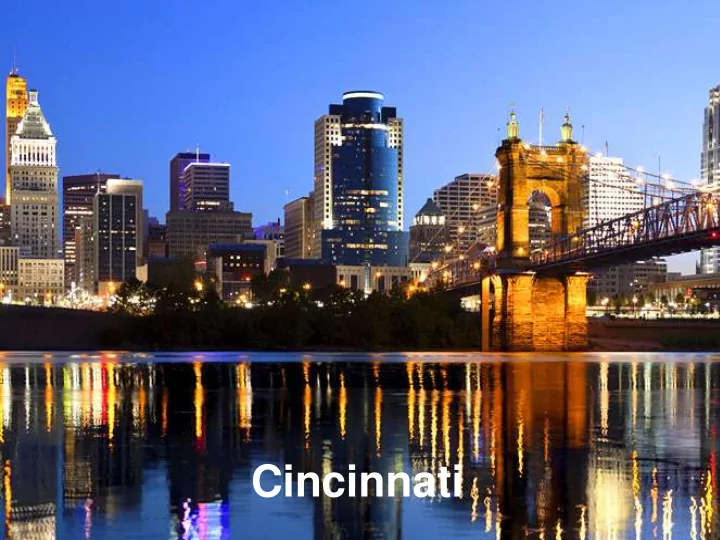

Cincinnati
• Publicly Owned/Operated Wastewater Utility Serving Southwest Ohio (Hamilton County) • Serves a Population of about 855,000 in Hamilton County and under contract parts of Butler, Clermont and Warren Counties • 230,000 Residential and 250 Industrial Users • Operates 7 Wastewater Treatment Plants; treating 70 Billion Gallons/Year Hamilton County, Ohio 2
772 cities in the United States with a combined sewer system -Cincinnati in top 5 2004 entered into a Global Consent Decree 2010 Federal court approved the Wet Weather Improvement Plan- estimated cost=$3.2 billion Phase 1=Must reduce CSOs in Lower Mill 212 Combined Sewer Overflow (CSO) Locations Creek by 1.78 by 2018 . 78 Sanitary Sewer Overflows (SSOs) Locations
A sewer project... ...could be more than a sewer project? What if... •... it could be a strategic investment ? •... it could be a catalyst for community transformation? •... it could be a regional model for a new watershed-based approach to community planning? • ... if it could be a national model for green infrastructure planning/design? •... it could involve the community and many public and private partners ? •... it did more than improve stormwater management and reduce combined sewer overflows? »... it created a network of community assets that attracted new interest and investment? »... if it left behind open spaces, enhanced streetscapes and opportunities for green buildings? ... if it served as a model for a sustainable 21st century community?
METROPOLITAN SEWER DISTRICT OF GREATER CINCINNATI
+ 1 Federally Mandated CSO Volume Reduction + $3B+ investment by rate Payers in new infrastructure X Private Participation, Boost to Local Economy, Community Revitalization = Sustainable Utility & Livable Community
Developing a solution that brings our historical water wealth normally below ground to the surface to create a benefit the community can see. Complies with USEPA requirements Provides lowest cost solution Utilizes stormwater as a community resource Creates new class of green jobs Improves water quality Offers potential to leverage private side actions
The “default” solution specified in MSD’s Consent Decree is an underground storage tunnel $500+ million Estimated cost (in 2006 dollars)
The “alternative” solution is less costly & has more benefits Sustainable Alternative 1.78 BG Reduction by 2018 $244M
Narrow Channel Zone Looking south towards Westwood Avenue
Opportunity for Private investment for Co-Benefit Solutions identified by Community Design Workshops: - Integrated Green Infrastructure solutions - Community Revitalization - Walkable Community Features - Historic Preservation Civic Recreation Hub Cincinnati WaterWorks Building Amphitheater Example Community Center Example Preliminary, planning-level cost estimates for relocating buildings: $1,000,000 - $2,000,000
public/private investments? Neighborhood District Concept- groundwork for Form Based Codes • Base investment by MSD for CSO reduction • On-site capture of stormwater flows • Incentivize Private investment as redevelopment occurs
GREATER CINCINNATI WATER WORKS A GLOBAL LEADER IN WATER TECHNOLOGY
• Municipally owned and operated utility since purchased by the City of Cincinnati in 1839. • 48 billion gallons of water a year • 3,000 miles of water mains • 235,000 residential and commercial accounts. • Greater Cincinnati Water Works water meets or exceeds all state and federal health standards.
GCWW Service Area
Highlights • Rapid sand filtration plant first opened in 1907- second in US • EPA put its primary water research program in Cincinnati. • In the 1970’s the EPA and the GCWW teamed up to research granular activated carbon or GAC. • In 1992, the Greater Cincinnati Water Works was the first utility in the nation to use GAC and then purify the carbon on- site. • GCWW was the first and only utility to test the EPA's water security plan. • The new ultraviolet treatment building , a $30 million project came online in October 2013.
www.projectgroundwork.org
Recommend
More recommend